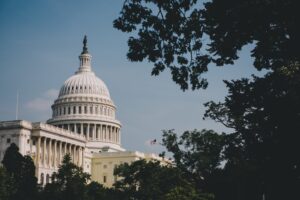If life has one guarantee, it’s that things rarely go as planned. Cars break down, jobs disappear, kids get sick, roofs leak. When those moments come, an emergency fund is what keeps a financial inconvenience from becoming a financial disaster.
But the advice on emergency funds often feels out of touch. “Just save 6 months of living expenses” isn’t realistic for many people living paycheck to paycheck. And even if you’re earning more, where you keep your emergency money can be just as important as how much you save.
This guide explains how much to save for emergencies at different life stages, where to keep that money, and how to build a safety net even if you’re starting from zero.
What Is an Emergency Fund?
An emergency fund is a pool of money set aside for unexpected, urgent expenses — not for vacations, shopping, or predictable bills.
Examples of true emergencies:
- Job loss or reduction in income
- Major medical bills
- Car repairs or home repairs
- Unexpected travel (family emergency)
Non-emergencies (that should be budgeted for separately):
- Holidays or gifts
- Planned car maintenance
- Routine medical costs
- Vacations
The key rule: emergency funds are for needs, not wants.
How Much Should You Save?
There’s no one-size-fits-all answer. The right amount depends on your income stability, expenses, and family situation.
Starter Goal: $500–$1,000
For anyone starting out or living paycheck to paycheck, focus on reaching $500–$1,000. This covers small emergencies like car repairs or medical bills.
Standard Rule: 3–6 Months of Expenses
Financial experts recommend 3–6 months of essential living costs (housing, food, utilities, insurance, debt payments).
- 3 months: Works for dual-income households or people with stable jobs.
- 6 months: Better for single earners, freelancers, or those with variable income.
Extended Cushion: 9–12 Months
In uncertain job markets or high-risk industries, a bigger fund provides extra security.
Real-Life Approach
If “6 months” feels impossible, start smaller. Even $20–$50 per paycheck adds up. The goal is progress, not perfection.
Where to Keep an Emergency Fund
The ideal emergency fund balances safety, liquidity, and growth.
High-Yield Savings Accounts (HYSAs)
- APY: ~4.00–5.00% (as of 2025)
- FDIC/NCUA insured
- Quick access within 1–3 days
- Best for: Most emergency funds
Money Market Accounts
- Similar to HYSAs, sometimes with check-writing or debit access
- Slightly lower rates, but more flexible
Short-Term CDs (6–12 months)
- Slightly higher yields than HYSAs
- Only if you’re confident you won’t need the money before maturity
What Not to Do
- Checking account: Too easy to spend, usually pays no interest.
- Stocks/crypto: Too volatile. Market drops can wipe out funds right when you need them.
- Cash at home: Useful for a few hundred in true emergencies, but not for the bulk of your fund.
Building an Emergency Fund from Scratch
- Start Small
Begin with $500, then push to $1,000. Celebrate milestones. - Automate Savings
Set up direct deposit or automatic transfers into your emergency account. - Cut One Expense Temporarily
Redirect even $25–$50/month from dining out, subscriptions, or entertainment. - Use Windfalls
Tax refunds, bonuses, or side hustle income are perfect emergency fund fuel. - Treat It Like a Bill
Pay yourself first, just like rent or utilities.
Emergency Fund vs. Other Financial Goals
- Paying Down Debt: If you’re buried in high-interest debt, aim for a small $1,000 emergency fund first. Then focus on debt, while slowly adding to savings.
- Investing for Retirement: Don’t skip retirement contributions entirely, but prioritize at least a starter emergency fund before aggressive investing.
- Homeownership: Before buying, ensure you have at least 3 months of expenses saved.
Real-World Example
Tasha, a single mom with two kids, earns $3,200/month after taxes. Her essential expenses are ~$2,500/month.
- Starter goal: $1,000 within a year (covering small emergencies).
- Standard goal: $7,500 (3 months of expenses).
- Stretch goal: $15,000 (6 months).
She opens a HYSA earning 4.50% APY. By saving $200/month plus applying her $1,200 tax refund, she reaches her $1,000 starter fund in just 5 months and begins building toward 3 months.
Common Mistakes with Emergency Funds
- Dipping into it for non-emergencies. Treat it as untouchable except for true crises.
- Keeping it in the wrong place. Checking accounts and cash jars don’t earn interest and are too tempting to spend.
- Going too big too soon. Don’t chase 6 months right away if it feels overwhelming. Build gradually.
- Forgetting to refill it. If you use the fund, start rebuilding immediately.
FAQs
How fast should I build my emergency fund?
There’s no perfect timeline. Focus on consistent progress, even small amounts monthly.
Do I need separate accounts for emergencies?
Yes, a separate HYSA helps reduce temptation to spend.
Should I invest my emergency fund for higher returns?
No. Safety and liquidity matter more than growth.
What if I can’t save much?
Even $10–$20 per paycheck matters. Small steps add up.
Can I use a credit card as an emergency fund?
Credit is not a substitute. It creates new debt instead of providing safety.
Conclusion
An emergency fund is financial breathing room. It won’t prevent life’s surprises, but it keeps those surprises from destroying your stability.
In 2025’s changing rate environment, high-yield savings accounts remain the best home for most emergency funds, offering both safety and growth.
The most important part isn’t whether you’ve saved 3 months or 6 — it’s that you’ve started. Every dollar you put aside is a dollar that gives you freedom, confidence, and resilience when life throws its next curveball.







